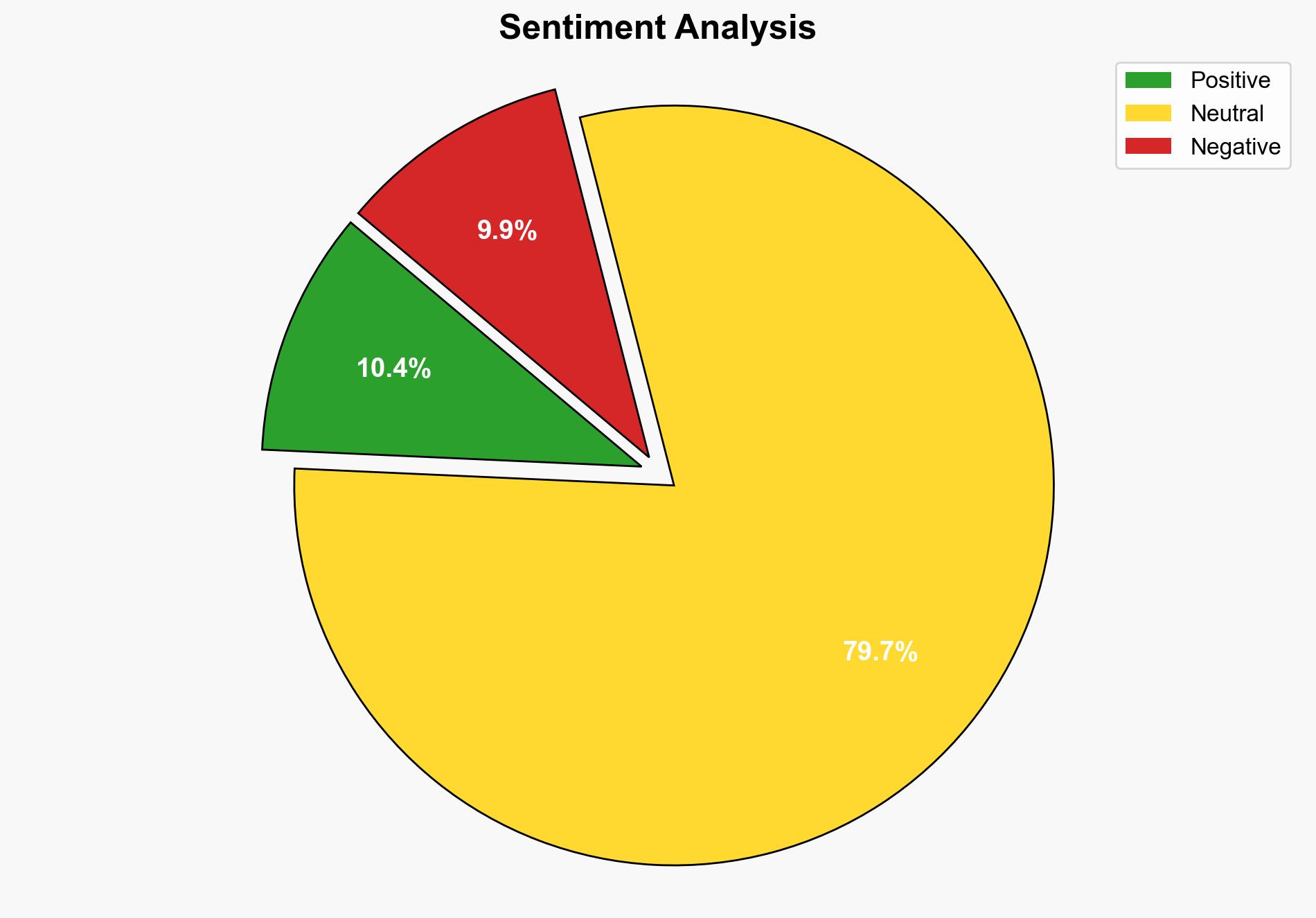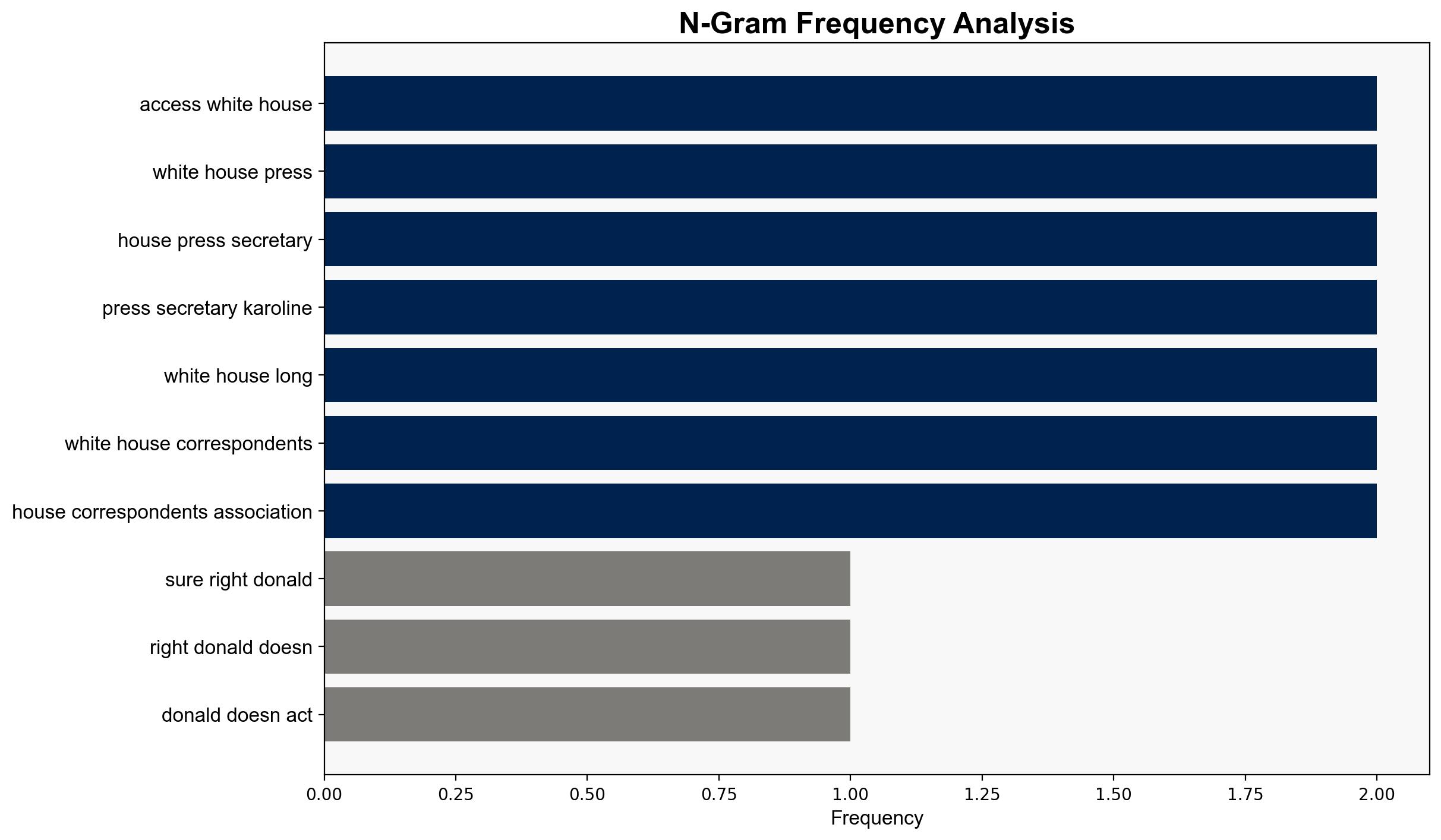White House Now Restricting Access For Journalists To Karoline Leavitt’s Office – Crooksandliars.com
Published on: 2025-11-03
Intelligence Report: White House Now Restricting Access For Journalists To Karoline Leavitt’s Office – Crooksandliars.com
1. BLUF (Bottom Line Up Front)
The most supported hypothesis suggests that the White House’s restriction on journalist access is primarily motivated by an intent to control the narrative and limit media scrutiny, rather than purely logistical or security concerns. Confidence level: Moderate. Recommended action: Monitor further changes in media access policies and assess impacts on press freedom and government transparency.
2. Competing Hypotheses
1. **Hypothesis A**: The restrictions are implemented to enhance operational security and efficiency within the White House, particularly in areas involving sensitive communications and national security.
2. **Hypothesis B**: The restrictions are a strategic move to limit media scrutiny and control the narrative surrounding the administration’s actions and policies.
Using the Analysis of Competing Hypotheses (ACH) 2.0, Hypothesis B is better supported due to the context of previous administration actions aimed at controlling media narratives and the lack of specific security incidents cited as justification for the new restrictions.
3. Key Assumptions and Red Flags
– **Assumptions**: Hypothesis A assumes genuine security concerns; Hypothesis B assumes a strategic intent to limit scrutiny.
– **Red Flags**: Lack of detailed justification for security concerns; historical patterns of media restriction by the administration.
– **Blind Spots**: Potential undisclosed security threats that could justify the restrictions.
4. Implications and Strategic Risks
– **Implications**: Restricting media access could lead to increased public distrust and speculation about government transparency.
– **Strategic Risks**: Potential escalation in tensions between the administration and the press, leading to broader implications for press freedom and democratic accountability.
– **Cascading Threats**: If perceived as a precedent, other government entities may adopt similar restrictive measures, impacting overall media freedom.
5. Recommendations and Outlook
- Monitor subsequent policy changes and public statements for further indications of intent.
- Engage with press freedom organizations to assess the broader impact on media access.
- Scenario Projections:
- Best Case: Restrictions are temporary and lifted after security reviews, restoring full media access.
- Worst Case: Restrictions become permanent, leading to a significant decline in government transparency.
- Most Likely: Continued restrictions with periodic reviews and minor adjustments based on public and media pressure.
6. Key Individuals and Entities
– Karoline Leavitt
– Steven Cheung
– Weijia Jiang
7. Thematic Tags
national security threats, media freedom, government transparency, strategic communications





